In terms of size, the Indian armed forces are amongst the largest in the world but in terms of equipment, they are lamentably lagging behind the leading edge of weapon systems and aircraft technology. In the area of military helicopters as well, India is forced to import most of the requirements from foreign vendors while the regulatory framework panders to HAL monopoly. Should the indigenous helicopter design and production capability be untethered from HAL and opened to private enterprise, there would be two advantages. Firstly, the delays and inefficiencies would disappear and secondly, the cost of leading edge technologies and products would reduce not just because of indigenous production, but also because of the possibility of export and economy of scale.
The Chinook scored over the Mi26 due to its lower acquisition/ life-cycle costs and poor serviceability record of the Mi26…
According to a report entitled “Global Helicopters Market Assessment” prepared recently by business consulting firm Frost & Sullivan, more than 11,170 military platforms are expected to enter service worldwide up to the year 2022, with a peak in 2018 for most regions. However, as per the report, the Asia-Pacific and Central Asia regions are likely to prove exceptions and would continue to order “significant” amounts of new helicopters as the technological and demand hub, especially for the military helicopters segment, progressively shifts from the West to the East.
Given that prognostication and considering the existence of two inimical territorial neighbours eagerly waiting for opportunities to afflict an ignominious military trouncing upon India, it is tragic that the nation should still be dithering over important defence procurement decisions. This is all the more lamentable as indigenous defence production is abysmal despite India being the largest arms importer in the world. The MMRCA saga has taken on the tenor and texture of an Indian TV serial wherein the story line changes in a bizarre manner just as one senses that the narrative is coming to an end. In a similar vein, the Reconnaissance and Surveillance Helicopter (RSH) selection process has been inordinately delayed for one reason or another while the military awaits the much needed rotary wing elements to meet urgent and minimal needs commensurate with its size, roles and adversaries.
Indian Air Force
The Indian Air Force (IAF) has around 400 helicopters half of which are the obsolescent Mi8/17 variants. Currently under induction are the Mi17V5 to replace these. The rest include Chetak, Cheetah, Cheetal and Dhruv.
Mi25/35 attack helicopters represent offensive capability of the force that will be augmented by the AH64D Apache attack helicopters from Boeing. The heavy-lift Mi26 are being replaced by the Chinook CH47 from Boeing. Other inductions underway or planned are additional Dhruvs, Light Combat Helicopter (LCH) and the Light Utility Helicopter (LUH) – all from Hindustan Aeronautics Limited (HAL). The latter two are under development.
The main roles of the helicopter fleet include communication, reconnaissance including the armed variety, armed/anti-tank/attack operations, Special Heliborne Operations (SHBO), Suppression of Enemy Air Defences (SEAD), logistic support to the Army, casualty evacuation, Special Operations, aid to civil administration in disaster management and tasks related to transportation of VVIPs. Keeping in view India’s vast territorial extent and its long border with seven nations, two of which are decidedly hostile, the size of the helicopter fleet is inadequate.
The Indian Air Force (IAF) has around 400 helicopters half of which are the obsolescent Mi8/17 variants…
The IAF’s medium-lift capability is based on the Russian Mi8, Mi17, Mi171V and the Mi17V5. India is one of the largest operators Mi8/17 helicopters in the world. The Mi17V5 has a maximum AUW of 12 tons/36 passengers or alternatively, four tonnes of underslung load. It can carry out an Out-of-Ground Effect (OGE) hover at elevations up to 6,000 metres and represents a significant enhancement in the medium-lift helicopter capability of the IAF. The first Mi17V5 was received in February 2012 and inducted into the IAF in January 2013. As an armed helicopter the Mi17V5 has impressive firepower, sophisticated avionics and onboard navigation systems and more powerful engines than the earlier variants. It also carries a weather radar, state-of-the art autopilot and latest generation night vision devices representing all-weather, day-night operations capability over any terrain. The final tally of Mi17V5s in the IAF would be around 200.
The Chetak, a license-built Alouette III and the Cheetah, a version of the Eurocopter Aérospatiale SA315B Lama single-engine helicopter that combines the lighter Alouette II airframe with Alouette III components and power-plant, have been the Light Utility Helicopters in service for decades now. However, this fleet is proving to be increasingly difficult to maintain. The Cheetal, a re-engined variant of the Cheetah, is more fuel-efficient and provides higher payload capability of 90 kg at an altitude of six kilometres. It has a ceiling of seven kilometres. The Chetak/Cheetah fleet was to be replaced by 64 of the 197 light helicopters to be procured from abroad under the RSH programme. Meanwhile, HAL is developing indigenously the single-engine LUH in the three-tonne class. HAL expects the aircraft to be ready by 2015 and intends to produce 187 of these to replace the Chetak/Cheetah fleet of the IAF.
The IAF is also in the process of inducting 54 Dhruvs – 38 utility and 16 armed versions. With a maximum AUW of 5,500 kg, the Dhruv lies just on the borderline between ‘light’ and ‘medium’. In contrast, the Chetak has an AUW of 2,200 kg and the Cheetah just 1,950 kg. While the Cheetah can carry three passengers, the Chetak can carry five in addition to a crew of two. The Dhruv, on the other hand, can carry 14 passengers besides the crew, is designed to meet civil and military requirements and meets the FAR Part 29 specifications. Unlike the LUH, which is a single-engine design, the Dhruv has two engines.
Twenty two Boeing AH-64D Apache Longbow have been ordered for around $1.4 billion…
As for heavy lift, the twin-rotor Boeing-manufactured Chinook CH47 has been selected and 15 of these are to be acquired to replace the Mi26 in service since 1986. The Chinook scored over the Mi26 due to its lower acquisition/ life-cycle costs and poor serviceability record of the Mi26. The Chinook can carry 55 combat-ready troops or over 11,100 kg of cargo and is capable of in-flight refuelling for extended range. The Chinook can be transported in the hold of the C17 Globemaster III. Ten of these that can transport the Chinook over large distances are being inducted into the IAF. The strategic connotation of this capability is obvious.
Twenty two Boeing AH-64D Apache Longbow have been ordered for around $1.4 billion. However, announcement by the Ministry of Defence (MOD) that the ownership of future inductions of attack helicopters will lie with the army has put some question marks over the issue. HAL’s Rudra is projected as an armed helicopter and is the Weapon System Integrated (WSI) Mk IV variant of the Dhruv ALH. It is the first armed helicopter being produced indigenously in India and is intended for a wide range of missions including reconnaissance, anti-tank warfare and close air support. It has been tested with a 20mm turreted gun, Mistral air-to-air missiles and 70mm rockets. HAL had planned to deliver 76 Rudra ALH Mk-IV helicopters to the Indian Army and the IAF and the latter was looking forward to the Rudra for high altitude operations. However, in view of the recent pronouncements by the MOD, induction of the Rudra into the IAF remains uncertain.
India is one of the largest operators Mi8/17 helicopters in the world…
Indian Army
As in other parts of the world where land armies became substantially matured in size, roles and tasks, the Indian Army also gradually felt the need for integral air resources. The Air Observation Post Squadrons/ Flights date back to pre-independence days. In 1939, Brig Massey, Brigadier Royal Artillery, Southern Command, pushed the Army’s case for the concept of Flying Observation Post (OP). The proposal was finally accepted and D Flight RAF was established in 1940 for this purpose. The first squadron to come into action was No 651 Air OP Squadron (RAF), commanded by Army officers, initially by Lt Col Bazeley and then by Maj RWV Neathercoat. This arrangement of the Air Force owning the Air OP flights/ squadrons continued until the formation of the Army Aviation Corps (AAC) in November 1986 as an arm of the Indian Army.
The AAC currently has 12 squadrons or 38 flights of Chetaks and Cheetahs in addition to six squadrons of Dhruv ALH. With each flight holding five helicopters, the total fleet strength of the Corps is 280 helicopters. While the Chetak and the Cheetah form the largest component of the Corps, the HAL Dhruv fleet whose induction commenced in 2001, is gradually becoming the backbone for the Corps. The short term target is for each Corps to have a Dhruv squadron and the long term one to provide a squadron or a squadron-less-a-flight to each Division. While the first twenty odd Dhruvs were Mark I, the latter are Mark II (glass cockpit) or Mark III (glass cockpit and Shakti engines). Newer Chetak airframes are being upgraded to the Lancer version fitted with weapons for anti-insurgency role.
In February 2013, the MOD signed a contract with HAL for supply of 20 Cheetal helicopters, more powerful version of Cheetah, over the next four years. The order is a short-term measure for logistics support to the Indian troops on the Siachen Glacier because of delays in the RSH programme. The RSH selection, once complete, will open the door for the induction of a new type of helicopter into the Army. The Army is also planning to acquire HAL-built Light Combat Helicopter to fit into an anti-armour and anti-infantry role at high altitude (16,300 feet). This version will probably be armed with Nag, a third generation missile developed indigenously. A ‘Weapon Systems Integrated’ (WSI) Dhruv Mark III is also being developed to carry either the MBDA Missile System’s Pars 3 LR and Rafael Advanced Defence System’s Spike-ER, both of which are ‘fire-and-forget’ Anti-Tank Guided Missiles (ATGMs). The Army is also planning to acquire the single engine HAL LUH, also under development, for recce and observation role.
Since the formation of the Corps in 1986, an arrangement has existed wherein the IAF operates, owns and administers attack helicopters but training and operations are controlled by the Army. The MOD permitted the Army to process separate case on the Foreign Military Sales route for procurement of the Apache. In addition, the LCH and the Dhruv WSI would serve in offensive roles. It is almost certain that the Mountain Strike Corps newly approved in July 2013 by the government, would have an aviation brigade equipped with the Apaches or other attack helicopters integral to it in addition to the helicopters in support and recce roles. Some of the other aviation roles under consideration by the Army are a Tactical Battle Support Helicopter capable of carrying 10 to 12 men into the battlefield, a Special Operations squadron to provide dedicated integral aviation support to Para Commandos and a Heli-borne Early Warning platform for electronic warfare.




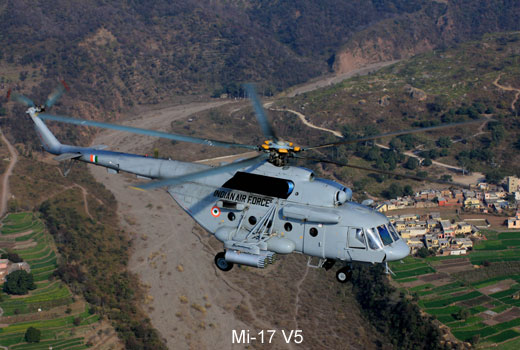
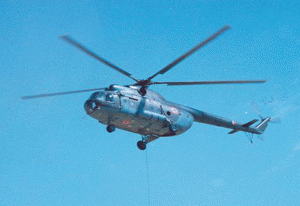
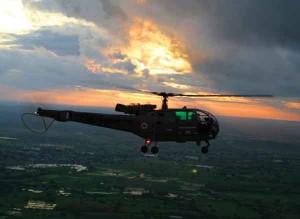
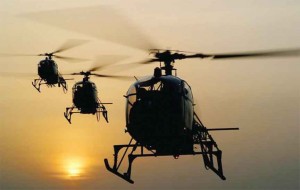
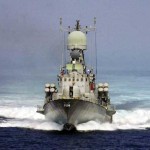
I agree 100% with your views Grp. Capt. Sachdev that the mostrous HAL should have been disbanded decades ago. India still being a third world country, cannot afford to waste thousands of crores of taxpayer money on inefficient and uesless companies like HAL. I have gathered from other reports that the increased crashes of Mig-21 here due to the airframes manufactured under license by HAL. They have not only caused useless low quality production of the cheapest air-interceptor but also caused massive delays and lower than promised quality of other aircraft like Jaguar DPSA, Mig-29 and helicopters. Most of the so-called engineers come to HAL, ADA and NAL only to work on internships and take govt. exp. letter and to go to foreign countries. Shame on them all. HAL should triple their production schedule and look upto Chinese airplane and helicopter manufacturers to see how advanced planes they make. This tripling of production will create the reqd force levels as well as make up for replacing older ones and attrition. HAL, are you listening?